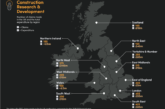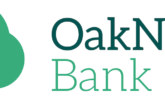
Kunal Sawhney, CEO of the Kalkine Group, explores how the needle is moving on the UK property market amid demand-supply dynamics.
The UK property market has been running hot since the start of 2021. The house prices are hitting record highs as property supply struggles to match the ever-growing demand. The continuing relaxation of lockdown restrictions and pandemic-driven work and lifestyle changes appear to be fueling the demand for properties amid the supply constraints.
Read: Can new build homes lead the energy revolution?
With several buyers rushing to beat the stamp duty holiday deadline and people reassessing their domestic set-up in the pandemic, the demand for additional property space is coming to the fore. At the same time, factors such as flexible working arrangements and the return of small-deposit mortgages in the market seem to be unfurling new opportunities for property owners to shift to a further-flung location.
Is there a bubble-like scenario in the housing market?
The UK appears to be on the verge of its biggest property boom seen in decades as house prices continue to swing upwards. The latest data from Halifax suggests that the country’s house prices rose at their fastest pace in five years in April 2021, ahead of a stamp duty holiday deadline.
The signs of property boom are evident across each segment of the housing market, with agents asking for final and best offers well beyond the asking price; buyers breaking in offers without even visiting the property they are planning to buy; and lenders offering cheaper home-loan rates to compensate for spiralling prices. All in all, a frenzy of activity in the property market is driving housing prices to record high levels, with elevated buyers’ demand meeting the record shortage of properties for sale.
At a time when the property market is up and running again, risk lingers that the ongoing runaway in housing prices can fuel a property bubble. Some fear that this property bubble can entrench serious inequalities between renters and homeowners, and rich and poor while squeezing first-time buyers out of the market.
However, the current scenario does not appear to be pointing towards a housing bubble as the fundamentals underpinning the property market are improving along with house prices. The situation seems different from the property bubble, wherein house prices inflate above fundamentals.
What lies ahead for the property market?
The deepening demand-supply imbalance is expected to retain house price growth in the near term. The property market temperature may rise in the coming months as more businesses open up following the lifting of restrictions and vaccine roll-out accelerates. However, the market fundamentals deserve closer attention in the mid-to long term once the support schemes end.
The potential withdrawal of the stamp duty holiday and other measures introduced by the government to support households in the COVID-19 era can emerge as a reality check for the property market. Once the government support is withdrawn, the market may experience a slump in buyers’ demand that can push the average house price down across the country. Besides, one cannot neglect that the end of coronavirus support can also free up some supply in the property market, potentially reducing the demand-supply gap.
Overall, the demand-supply equation will determine whether the property prices head northward or edge towards the south, with multiple factors discerning the equilibrium.








